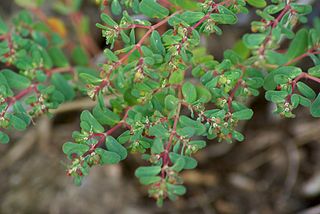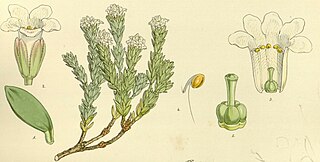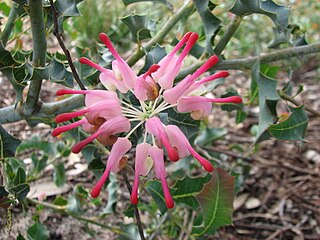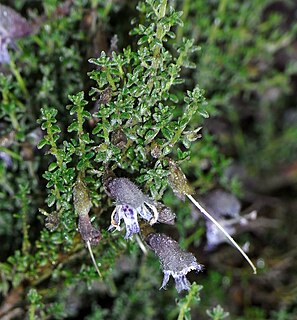
Perth is the capital and largest city of the Australian state of Western Australia (WA). It is Australia's fourth-most populous city, with a population of 2.08 million living in Greater Perth in 2018. Perth is part of the South West Land Division of Western Australia, with most of the metropolitan area on the Swan Coastal Plain between the Indian Ocean and the Darling Scarp. The city has expanded outward from the original British settlements on the Swan River, upon which the city's central business district and port of Fremantle are situated. Perth city is located on land on which the Whadjuk Nyoongar, the Aboriginal people of the south west of Western Australia, have lived for at least 38,000 years.

The Kimberley is the northernmost of the nine regions of Western Australia. It is bordered on the west by the Indian Ocean, on the north by the Timor Sea, on the south by the Great Sandy and Tanami deserts in the region of the Pilbara, and on the east by the Northern Territory.

The Tasmanian temperate rain forests are a temperate broadleaf and mixed forests ecoregion in western Tasmania. The ecoregion is part of the Australasian realm, which includes Tasmania and Australia, New Zealand, New Guinea, New Caledonia, and adjacent islands.

Prostanthera, commonly known as mintbush or mint bush, is a genus of about 100 species of flowering plants in the mint family Lamiaceae, and all are endemic to Australia. Plants are usually shrubs, rarely trees with leaves in opposite pairs. The flowers are arranged in panicles in the leaf axils or on the ends of branchlets. The sepals are joined at the base with two lobes. The petals are usually blue to purple or white, joined in a tube with two "lips", the lower lip with three lobes and the upper lip with two lobes or notched.

Hibbertia, commonly known as guinea flowers, is a genus of flowering plants in the family Dilleniaceae. They are usually shrubs with simple leaves and usually yellow flowers with five sepals and five petals. There are about 400 species, most of which occur in Australia but a few species occur in New Guinea, New Caledonia, Fiji and Madagascar.
British NVC community OV39 is one of the open habitat communities in the British National Vegetation Classification system. It is one of six communities of crevice, scree and spoil vegetation.

Euphorbia serpyllifolia is a species of euphorb known by the common names thymeleaf sandmat or thyme-leafed spurge. It is native to a large part of North America from Canada to Mexico, where it is a common member of the flora in many types of habitat. This is an annual herb growing as a prostrate mat or taking a somewhat erect form. The oblong leaves are up to about 1.5 centimeters long, sometimes hairy and finely toothed along the edges. The tiny inflorescence is a cyathium about a millimeter wide. It bears scalloped white petal-like appendages arranged around the actual flowers. At the center are several male flowers and one female flower, which develops into a lobed, oval fruit up to 2 millimeters wide. This plant had a number of traditional medicinal uses for many Native American groups.

Archeria serpyllifolia, commonly known as thyme archeria, is a species of shrub in the family Ericaceae. It is endemic to Tasmania, Australia.
Pimelea serpyllifolia, commonly known as the thyme riceflower, is a species of plant in the family Thymelaeaceae that is endemic to southern Australia. It is a small dioecious shrub that grows to 1.5 m in height where sheltered, though it has a prostrate or stunted habit in exposed positions. The stems are glabrous and the leaves small and blue-green. It bears clusters of tiny yellow flowers.

Grevillea insignis, commonly known as wax grevillea, is a shrub species which is endemic to the south-west of Western Australia. The species was first formally described in 1855 in Hooker's Journal of Botany and Kew Garden Miscellany.

Houstonia serpyllifolia, commonly called thymeleaf bluet, is a species of plant in the coffee family (Rubiaceae). It is native to the eastern United States, where it is found in the central and southern Appalachian Mountains. It has been documented in the states of Pennsylvania, Maryland, West Virginia, western Virginia, North Carolina, South Carolina, Kentucky, Tennessee, Ohio, and northeastern Georgia.

Prostanthera serpyllifolia, commonly known as small-leaved mint-bush, is a species of flowering plant in the family Lamiaceae and is endemic to southern Australia. It is a small shrub with small egg-shaped leaves and bright pink to red or metallic bluish-green flowers.
Hibbertia serpyllifolia is a species of small perennial shrub, in the family Dilleniaceae, that is endemic to Australia. It has small yellow five-petalled flowers.
Persoonia pungens is a species of flowering plant in the family Proteaceae and is endemic to the south-west of Western Australia. It is an erect to spreading or low-lying shrub with densely hairy young branchlets, twisted elliptic to oblong, sharply-pointed leaves, and glabrous, bright yellow flowers borne in groups of up to five.

Epacris serpyllifolia, also known as alpine heath, is a plant of the family Ericaceae, that is native to southeast Australia: the states of Tasmania, Victoria and New South Wales. Growing in heathland, sup-alpine and/or mountainous areas, it is generally a small shrub around 0.3 metres to 1.2 metres in height, with small stiff leaves. White tube-like flowers appear from spring to early summer. It regenerates after bushfire by seed or by resprouting.

Ericomyrtus is a genus of shrubs, in the family Myrtaceae, all of which are endemic to Australia.
Ericomyrtus drummondii is a shrub endemic to Western Australia.
Ericomyrtus parviflora is a shrub endemic to Western Australia.
Ericomyrtus tenuior is a shrub endemic to Western Australia.












